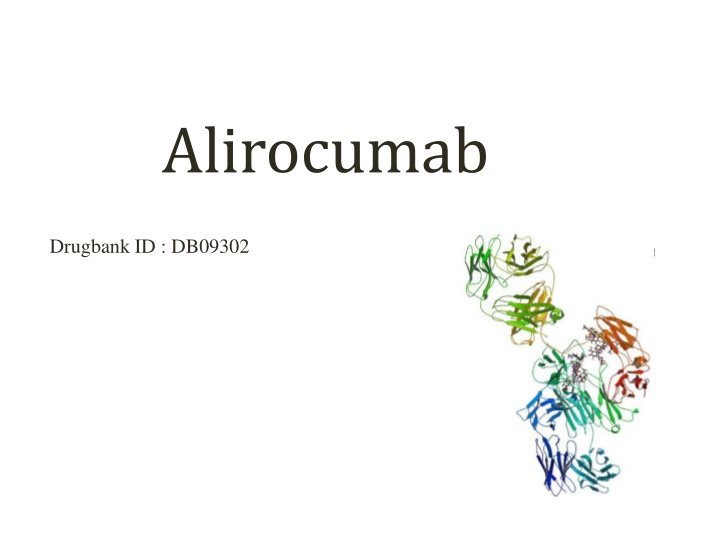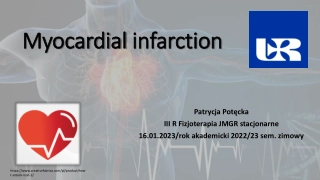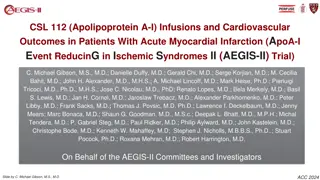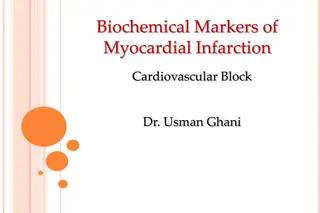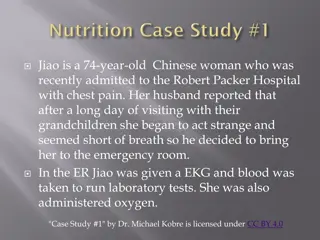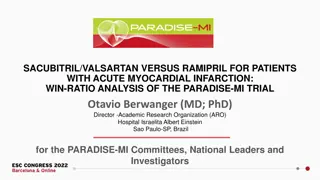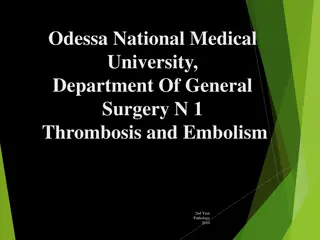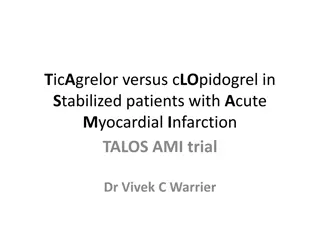Management of Malignant MCA Infarction: Clinical Questions, Guidelines, and Recommendations
This comprehensive content delves into the management of Malignant Middle Cerebral Artery (MCA) Infarction, covering topics such as airway management, ICU protocols, surgical considerations, ethical aspects, glucose control, hyperventilation effects on increased ICP, DHC utilization, brain edema treatment, prophylaxis strategies, and more.
Uploaded on Apr 16, 2025 | 1 Views
Download Presentation

Please find below an Image/Link to download the presentation.
The content on the website is provided AS IS for your information and personal use only. It may not be sold, licensed, or shared on other websites without obtaining consent from the author.If you encounter any issues during the download, it is possible that the publisher has removed the file from their server.
You are allowed to download the files provided on this website for personal or commercial use, subject to the condition that they are used lawfully. All files are the property of their respective owners.
The content on the website is provided AS IS for your information and personal use only. It may not be sold, licensed, or shared on other websites without obtaining consent from the author.
E N D
Presentation Transcript
Alirocumab Drugbank ID : DB09302
Description: Alirocumab is a biopharmaceutical drug approved by the FDA in July 2015 as a second line treatment for high cholesterol for adults whose LDL-cholesterol (LDL- C) is not controlled by diet and statin treatment. It is a human monoclonal antibody administered by subcutaneous injection that belongs to a novel class of anti- cholesterol drugs, known as PCSK9 inhibitors, and it was the first such agent to receive FDA approval. The FDA approval was contingent on the completion of further clinical trials to better determine efficacy and safety. PCSK9 inhibition facilitates more LDL-C clearance from the blood. Indication: Alirocumab is indicated as an adjunct to diet and maximally tolerated statin therapy in adults who require additional LDL-cholesterol (LDL-C) lowering due to heterozygous familial hypercholesterolemia or clinical atherosclerotic cardiovascular disease. Pharmacodynamics: Alirocumab reduces levels of PCSK9 in a concentration-dependent manner.
Mechanism of action : Alirocumab is a fully human IgG1 monoclonal antibody that binds and inhibits proprotein convertase subtilisin/kexin type 9 (PCSK9), an enzyme found to have "gain of function" mutations in autosomal dominant hypercholesterolemia. PCSK9 is secreted by the liver and typically binds to the LDL receptors in serum and marks them for lysosomal degradation. In result, the LDL receptors are not able to recycle to the plasma membrane, reducing their binding to LDL-C and therefore reducing the clearance of LDL-C from plasma. Therefore by inhibiting PCSK9's actions, alirocumab allows for more LDL-C reuptake by the liver and facilitates a higher rate of clearance. Lower LDL cholesterol concentrations are associated with a reduced risk of coronary heart disease.
Targets : Proprotein convertase subtilisin/kexin type 9 Affected organisms : Humans and other mammals Categories : Hypercholesterolemia, drug therapy
Brands : Praluent Company : Sanofi Aventis Description : PRALUENT is a sterile, preservative-free, clear, colorless to pale yellow solution for subcutaneous injection. PRALUENT 75 mg/mL or 150 mg/mL solution for subcutaneous injection in a single-dose pre-filled pen or single-dose pre-filled syringe is supplied in a siliconized 1 mL Type-1 clear glass syringe. The needle shield is not made with natural rubber latex. Used for/Prescribed for : It is indicated as an adjunct to diet and maximally tolerated statin therapy for the treatment of adults with heterozygous familial hypercholesterolemia or clinical atherosclerotic cardiovascular disease, who require additional lowering of LDL-C Formulation : PRALUENT 75 mg/mL or 150 mg/mL solution for subcutaneous injection in a single-dose pre-filled pen or single-dose pre-filled syringe is supplied in a siliconized 1 mL Type-1 clear glass syringe. Form : sterile, preservative-free, clear, colorless to pale yellow solution for subcutaneous injection Route of administration : subcutaneous
Contraindication : PRALUENT is contraindicated in patients with a history of a serious hypersensitivity reaction to PRALUENT. Reactions have included hypersensitivity vasculitis and hypersensitivity reactions requiring hospitalization. Side effects : Allergic reaction
References : http://www.rxlist.com/praluent-drug/side-effects-interactions.htm http://www.drugbank.ca/drugs/DB09302
